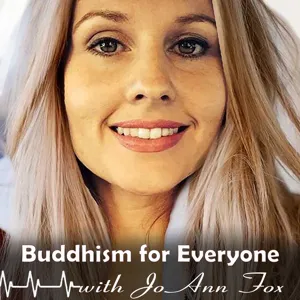There is a way to purify negative karma! Phew. Buddha taught the Four Powers of Purification as a method to purify the negative karma we’ve created in the past. The powers of purification act together or alone. For example, as soon as we have even a moment of regret for some harm we’ve done, we start to purify that karma. However, to fully purify negative karma form previous actions, the four powers can be used as a meditation. This practice illuminates Buddhism’s most essential tenet: that we can profoundly change--and even become a completely pure, enlightened being.
How to purify negative karma through the Four Powers:
1. Regret
2. Reliance
3. Remedy
4. Resolve
-
The Power of Regret
The first power is healthy regret. This type of regret stands in contrast to guilt. Guilt is anger towards oneself. It makes us feel bad about ourselves. Regret, however, understands we acted out of delusions like anger, jealousy, pride, or greed, but our nature remains pure and good. A mind of regret wants to be free of these delusions like getting poisons out of ourselves. Regret makes us naturally desire not to repeat that action and the harm we caused.
-
The Power of Reliance
To understand the power of reliance, imagine that making a mistake is like falling down on the ground. Just as we depend on the ground to stand up again, when we cause harm, we can purify it only by depending on the two types of beings we harmed: the Buddha (who is a wise guide, like a doctor) and ordinary living beings.
First, we rely on the Buddha by following his teachings to become better. If you're not a Buddhist, you can still do something similar. You could renew your commitment to follow the advice of someone you admire, or dedicate yourself again to good things you want to do. You can practice reliance in the meditation on the four powers by asking a higher power for help, like praying to Jesus or asking Buddha for help to purify. Second, we rely on other living being by developing compassion and love for them.
3. The Power of Remedy
This refers to the power of applying remedies. In this step, we need to do something positive to counteract the negative energy we created, JoAnn Fox shares a traditional method for applying remedies by reciting the mantra of Vajrasattva, Buddha of Purification (see the mantra below.)
If you feel comfortable visualizing an enlightened being, you can visualize a figure such as Buddha or Vajrasattva above your head. You can visualize Buddha as you’ve seen him depicted or simply as a being made of golden light. Vajrasattva can be imagined in a simple way as a being of white light. While reciting the mantra, imagine light flowing down from the holy being at your crown. The light flows down, through the crown of your head, and fills your entire body purifying all your negative karma and delusions.
If you do not feel comfortable visualizing such a being, you can imagine a sphere of light above your head, thinking that it represents all enlightened qualities like love and compassion. Visualize light flowing down from the sphere and filling you.
The short Mantra of Vajrasattva, Buddha of Purification
Om Vajra Sattva Hum
4. The Power of Resolve
The power of resolve (sometimes called the power of promise) involves a promise to try to refrain from a harmful action in the future. If you’re trying to purify a specific negative action, it can be especially meaningful to refrain from an action that is similar to that original harmful action. For example, if you’re trying to purify stealing, you can promise to refrain from stealing in the future. Alternatively, you can decide to act in more positive ways, such as being more generous or promising to donate to a charity.
“First, if all the causes and conditions for something to occur come together and there is nothing opposing its arising, the effect is certain to occur. For example, if a barley seed (the cause) is planted, the conditions of moisture, warmth, sunlight, and nutrients come together, and opposing conditions such as frozen ground, disease, and being trampled by animals, don’t oppose it, a barley plant is certain to grow. Similarly, if you have the karmic seeds of anger and that anger is not opposed by your practice of patience, understanding of emptiness, or a vow or commitment not to get angry, when you meet with someone (the external condition) who says or does something you experience as harmful, your karmic urge will drive you to get angry.” --Je Tsongkhapa
O foolish one!
What is the use of wearing matted hair?
What is the use of your wearing a garment made of antelope skin?
In you, there is a forest (of moral defilements);
you clean yourself only externally.
—Buddha, The Dhammapada. Verse 394
References with Links
Buddha (1986).The Dhammapada: Verses and Stories. Translated by Daw Mya Tin, M.A. (Website). Edited by Editorial Committee, Burma Tipitaka Association Rangoon. Courtesy .of Nibbana.com. For free distribution only, as a gift of dhamma. Retrieved from https://www.tipitaka.net/tipitaka/dhp/verseload.php?verse=394
Je Tsongkhapa (2014). Great Treatise on the Stages of the Path to Enlightenment, by Je Tsongkhapa, Volume 1 (Kindle). Translated by the Lamrim Chenmo Translation Committee. Joshua Cutler, Editor-in-Chief, and Guy Newlan, Editor, pg 209-214.
Find us at the links below:
Website: BuddhismforEveryone.com
Facebook: https://www.facebook.com/Buddhismforeveryone
Facebook Group: Join our private group at:https://www.facebook.com/groups/sanghatalk/
Instagram: https://www.instagram.com/buddhism.with.joann.fox
